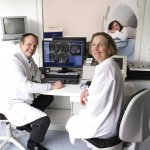
Article • Stroke prevention
Ultrasound brings many advantages, but trained sonographers are too few
What is the role of vascular ultrasound in stroke prevention? Asked by Karoline Laarmann of European Hospital, Professor Christian Arning MD, Medical Director of the Neurology Department at Asklepios Klinik Wandsbek, Germany, and Deputy Chairman of the German Society of Ultrasound in Medicine (DEGUM), gave an unequivocal answer: crucial - but only if the sonographer is properly qualified.






















